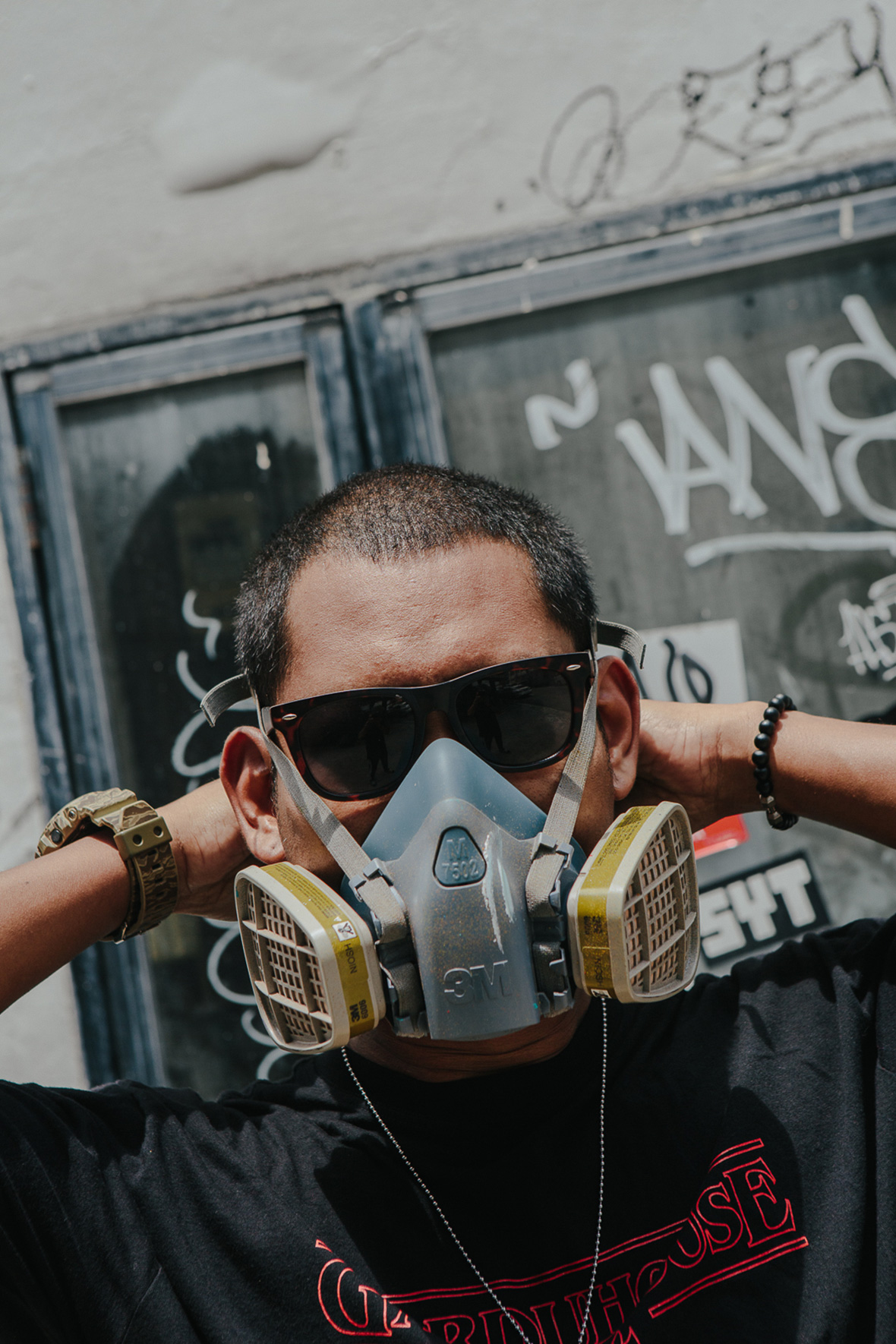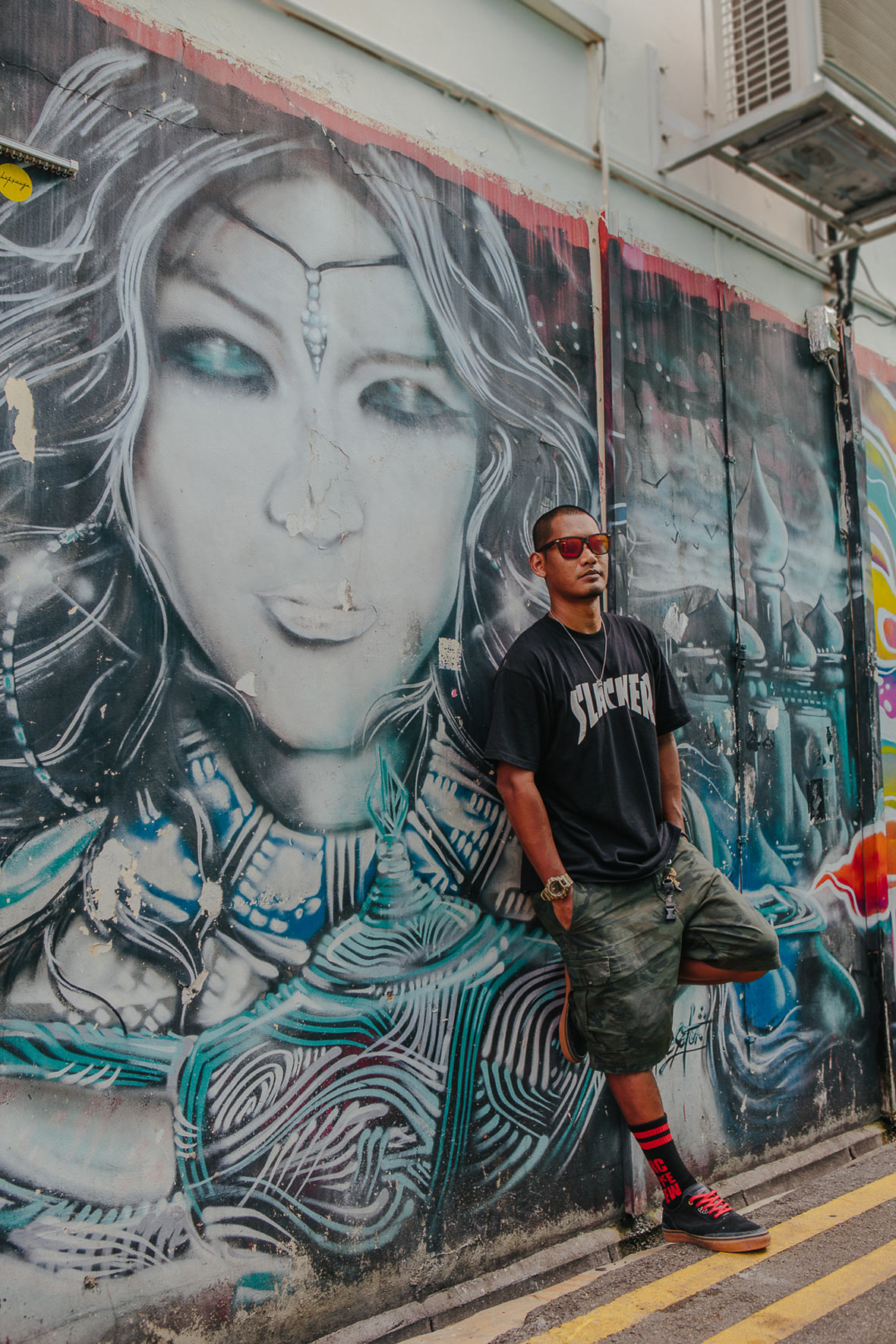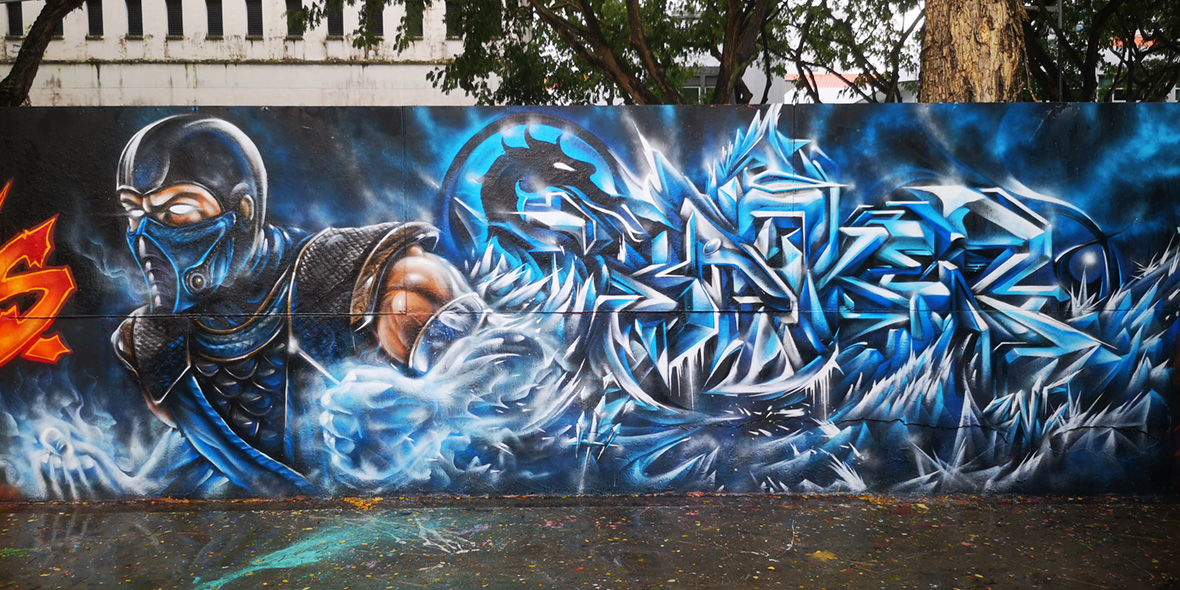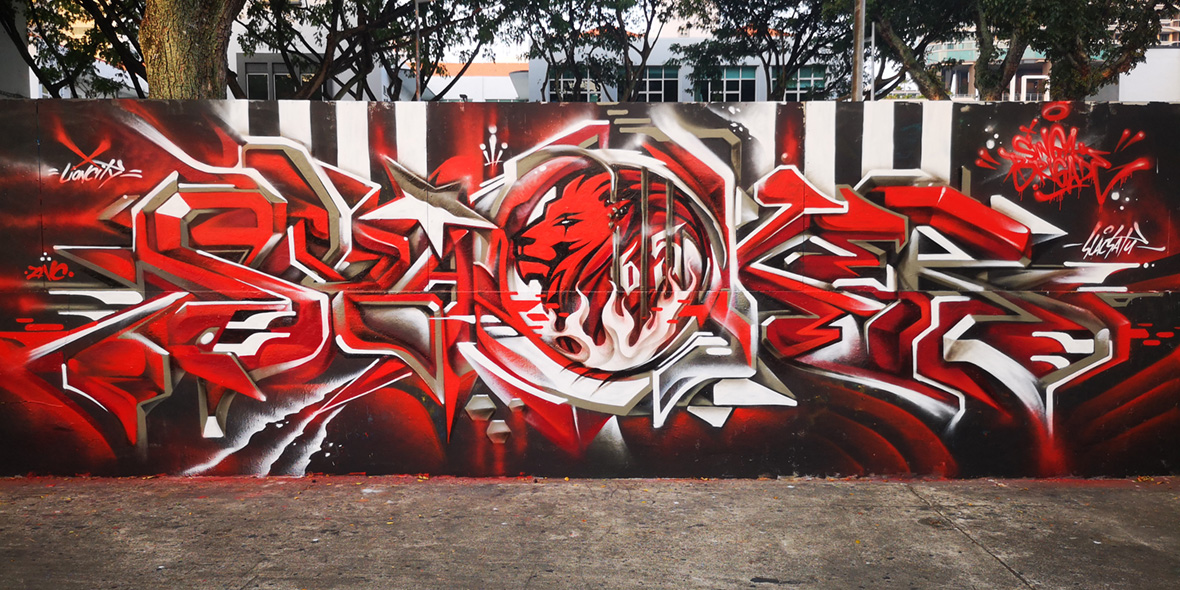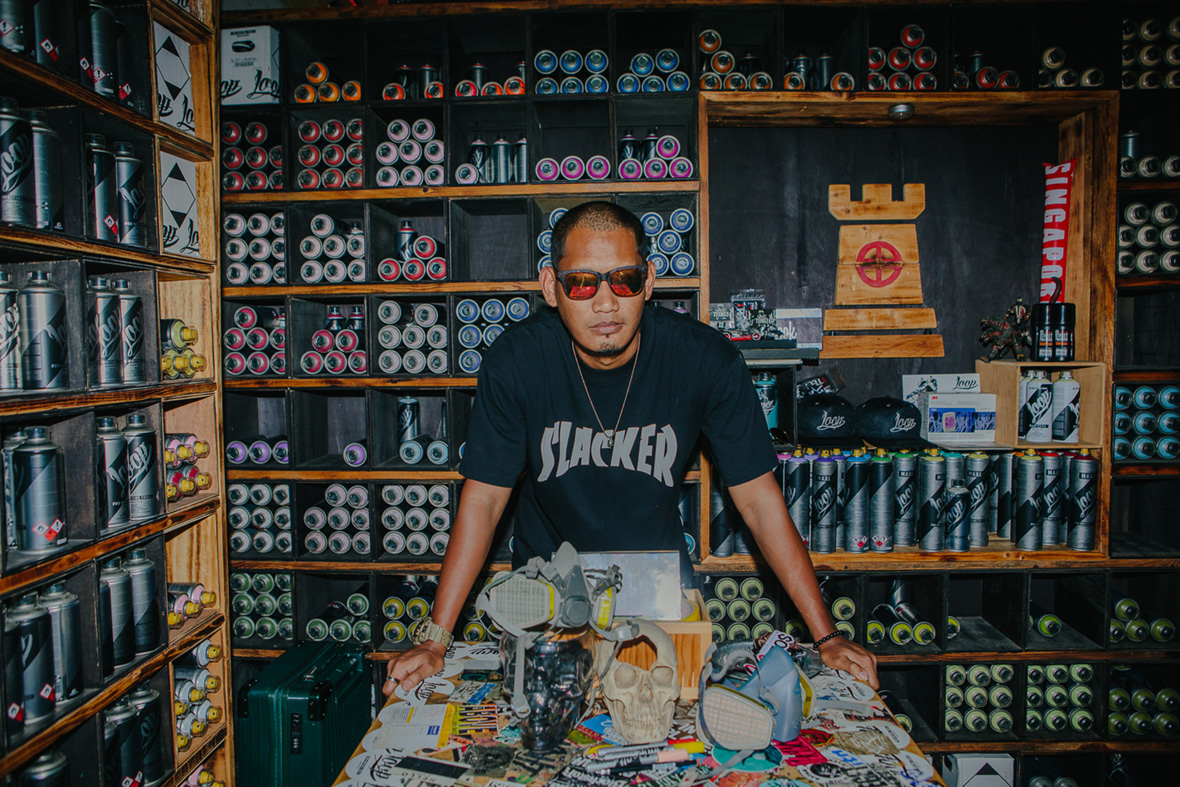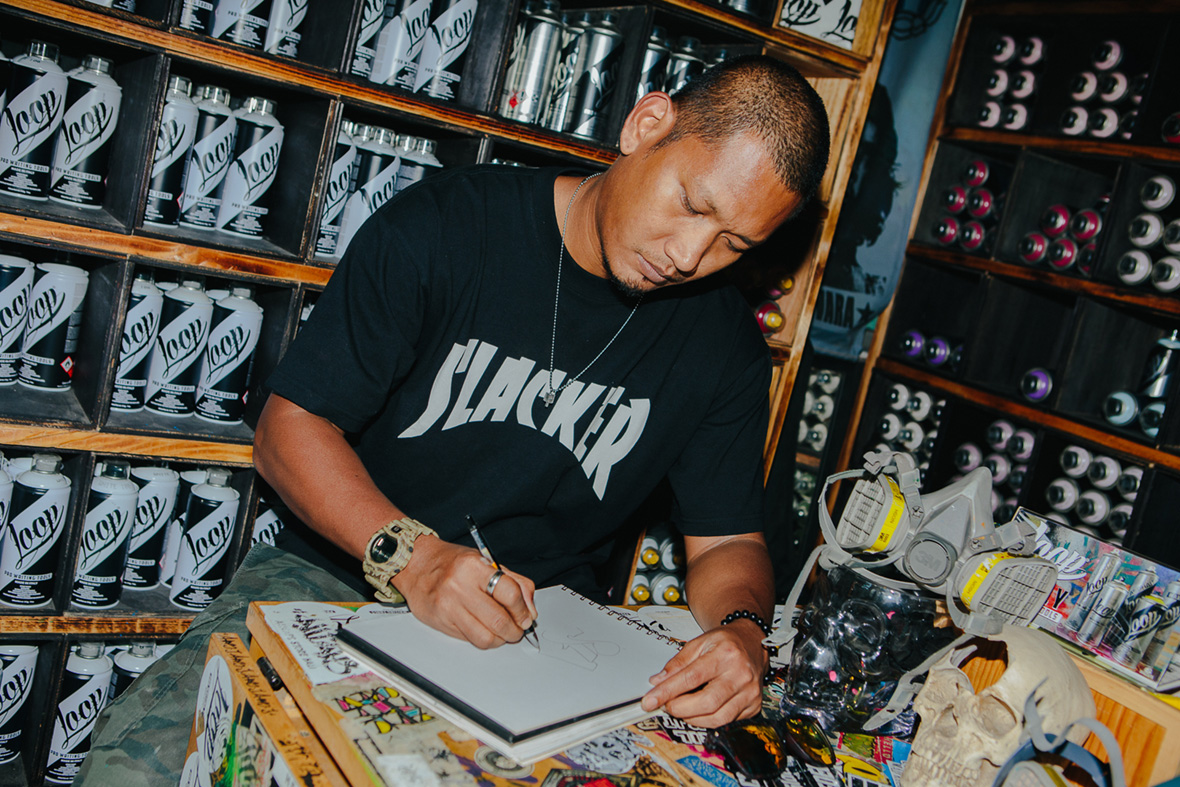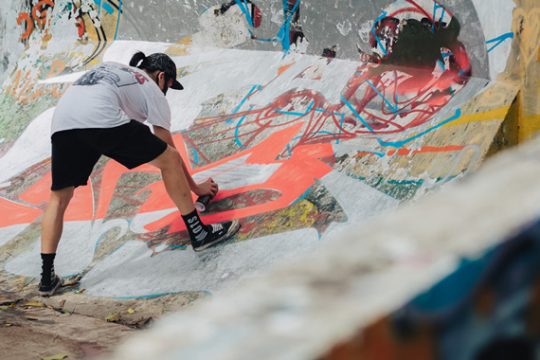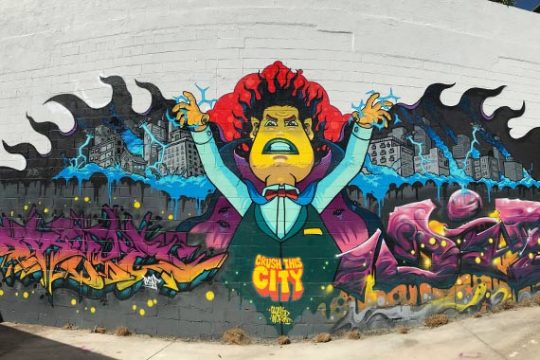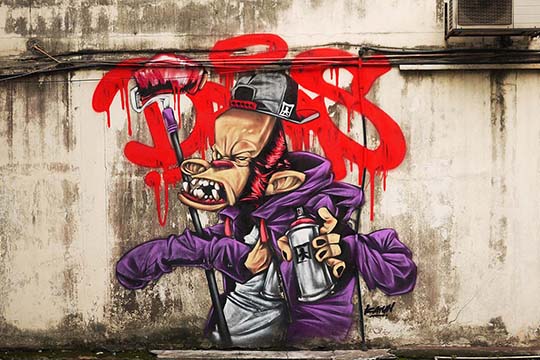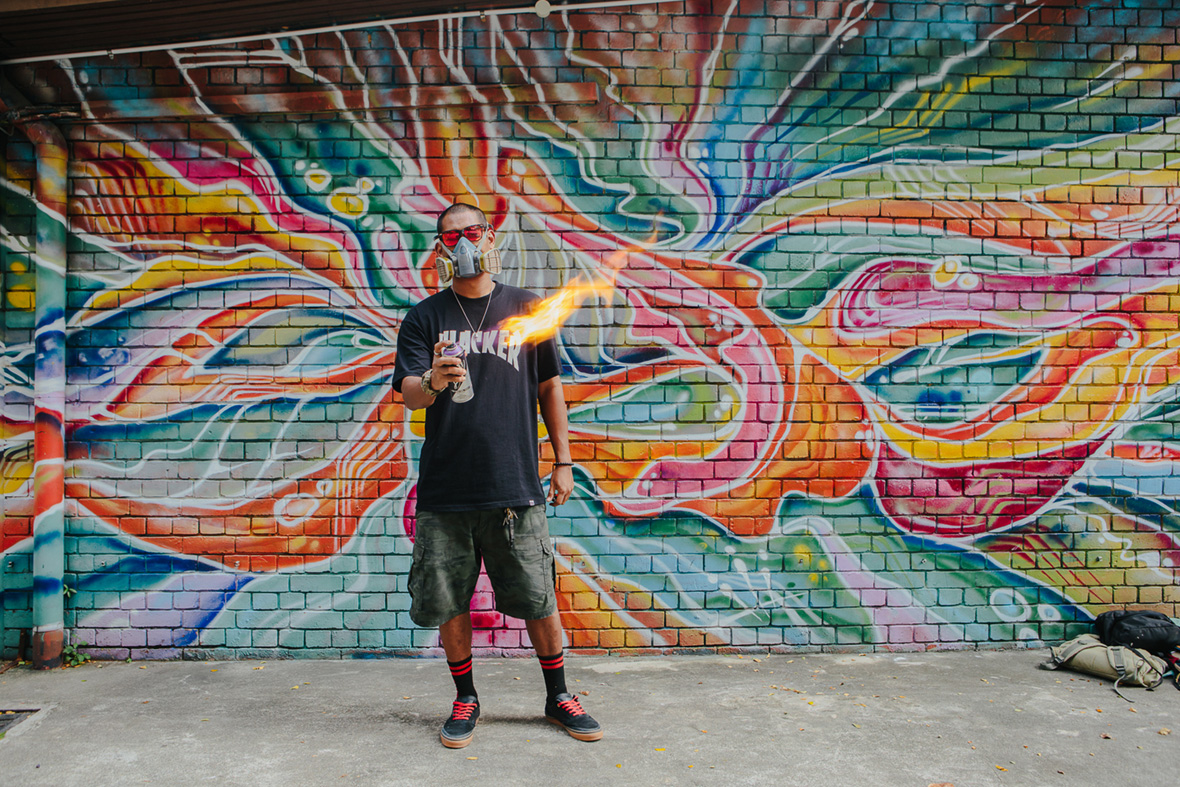
When people talk about the best cities for graffiti, Singapore, with its draconian anti-vandalism laws, isn’t usually high on the list. Yet it’s home to one of Asia’s most prominent graffiti artists Slac Satu—who co-founded the Zinc Nite Crew and became famous in a high-profile criminal graffiti case.
Slac got his start when graffiti in Asia was still young. Back in 1998, when neither he nor Singapore knew what graffiti was yet, Slac and his friend Monk began running around the city catching tags by night. They didn’t know anyone doing anything like this, though later they learned that another group called OAC had also been writing.
提到最适合涂鸦的城市,新加坡通常都是榜上无名,毕竟这里的反破坏公物法律极其严酷。然而,亚洲最出色的涂鸦艺术家之一:Slac Satu 正是来自新加坡。他是 Zinc Nite Crew 的共同创始人,因为一起广受关注的涂鸦刑事案件而为人熟知。
涂鸦在亚洲刚兴起时,Slac 就开始参与涂鸦创作。1998 年,他和当时的大多数新加坡人一样,对于涂鸦这个概念还很懵懂。那时候,他常常和朋友 Monk 趁着夜色,奔走于这座城市的不同角落创作 tag(签名)。刚开始,他们以为只有自己在做这样的事情,直到后来他们发现另一个名为 OAC 的团队也在玩涂鸦。
Though he was most inspired by American graffiti, Slac was thirsty for any scrap of knowledge he could find. “Skateboarding magazines had a lot of graffiti in them, so we’d spend hours studying the small pictures,” he recalls. Although they started out bombing—working illegally, getting their work up in highly visible spots—they were also fine-tuning their artsy skills in hidden spots along Singapore’s canals.
美式涂鸦对 Slac 的创作影响最深,他如饥似渴地搜集一切找到的资料学习。他回忆说:“滑板杂志上有很多涂鸦,所以我们常常花很多时间去研究里面的图片。”尽管他们已经开始到街上去“非法”涂鸦——为提升被看见的几率,他们都尽可能地在人流量大的地方画,但同时也一直在沿着运河旁的隐蔽角落,不断磨炼自己的技巧。
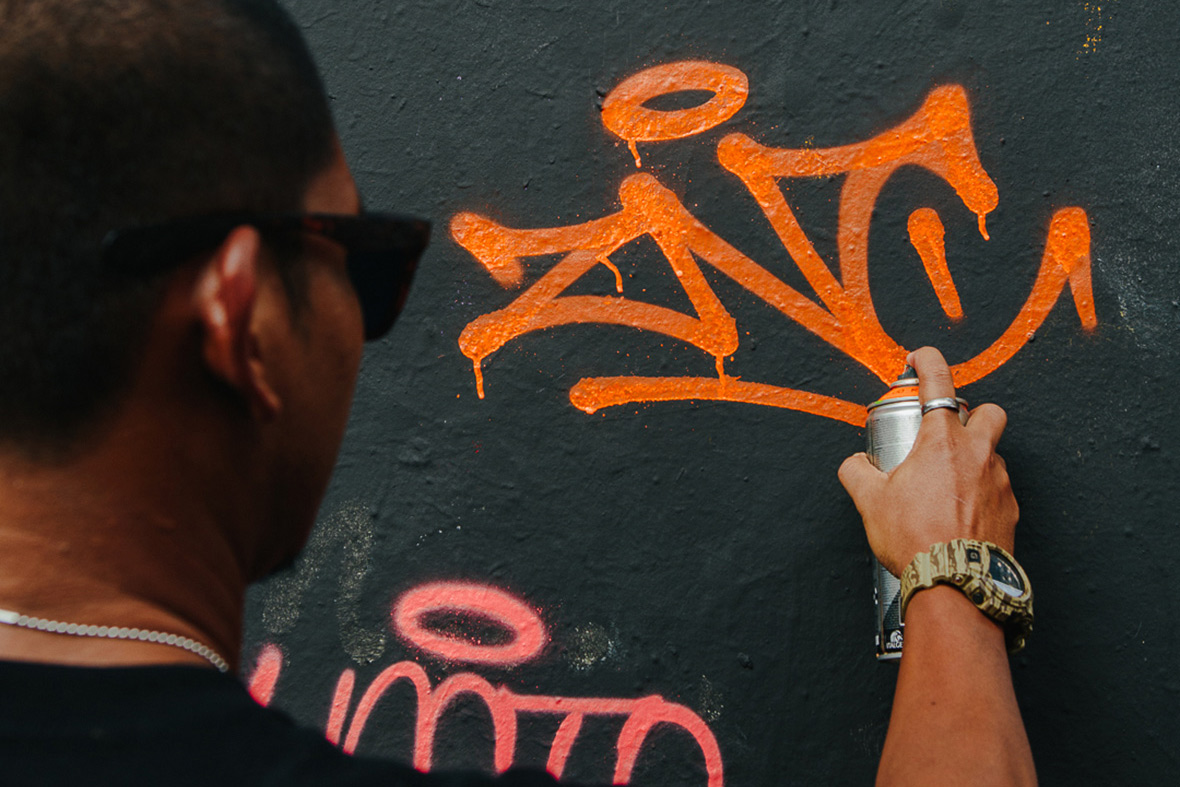
The public had no idea what to think in those early days. “At first it was quite chill,” Slac recalls. “A lot of times we’d just paint right out in the open in front of other people. They just watched in silence.” The honeymoon didn’t last long. Vandalism was on everyone’s radar, especially after an American had been sentenced to jail and caning for wrecking some automobiles a few years earlier. But Slac considered himself an artist. “I truly believed I was being creative and putting free art on the streets.” The police didn’t see it that way.
In 2000, the police arrested Slac and three other teammates. “They were already investigating us, but we didn’t know it,” he says. “We were ambushed one night and caught in the act putting our names up. I got away but had to surrender myself the next day.” He faced jail time, but after fighting the case for close to three years, he got off with one year of probation, a 9 p.m. curfew, one hundred hours of community service, and some hefty fines. He was also blacklisted for the next ten years. “When that happens, you end up on a ‘naughty list.’ If you’re looking for work, employers know it and getting a good job becomes a challenge.”
“ZNC was done for,” Slac says. “I was about to quit graffiti.” Luckily a friend signed him up for a graffiti competition, one of the country’s first. “I was stressed about the case, which was still ongoing. But we were just getting started.” So he went—and won.
刚开始,公众对涂鸦的态度还不太明确。“大家的反应都挺平静的。”Slac 回忆道,“很多时候,我们就是这样在大庭广众下涂鸦,旁边的路人也只是默默地看着。”但这种和平没有持续多久,涂鸦开始被视为一种蓄意破坏公物的行为而备受关注。尤其是在几年前,一个美国少年因为涂鸦多辆汽车而被判入狱和鞭刑的案件发生之后,这种情况愈演愈烈。但是 Slac 认为自己只是一位艺术家。“我只不过在进行创意创作,在街上创作免费的艺术品。”但警察却不这么认为。
2000 年,警察逮捕了 Slac 和他的三个队友。他说:“警察原来一早就在调查我们,但我们完全蒙在鼓里。某天晚上我们在涂鸦的时候,警察早就埋伏好,当场逮捕我们。我成功逃跑了,但是第二天还是去自首了。”他面临入狱处罚,在打了近三年的官司之后,他最终获一年缓刑,加上晚上 9 点的宵禁、一百小时的社区服务以及高额罚款。在接下来的十年中,他被列入了黑名单。“发生这种情况后,你就会被加入一个黑名单。如果你要找工作,雇主就会知道这一点,那么想找一份好工作就比较难了。”
Slac 说:“我当时觉得 ZNC 要解散了,也打算不再涂鸦了。”幸运的是,一位朋友帮他报名参加了一场涂鸦比赛,这场比赛也是新加坡国内的首次涂鸦比赛。“我当时压力很大,还在打官司,但我们才刚刚开始。”所以他去参加了比赛,并胜利凯旋。
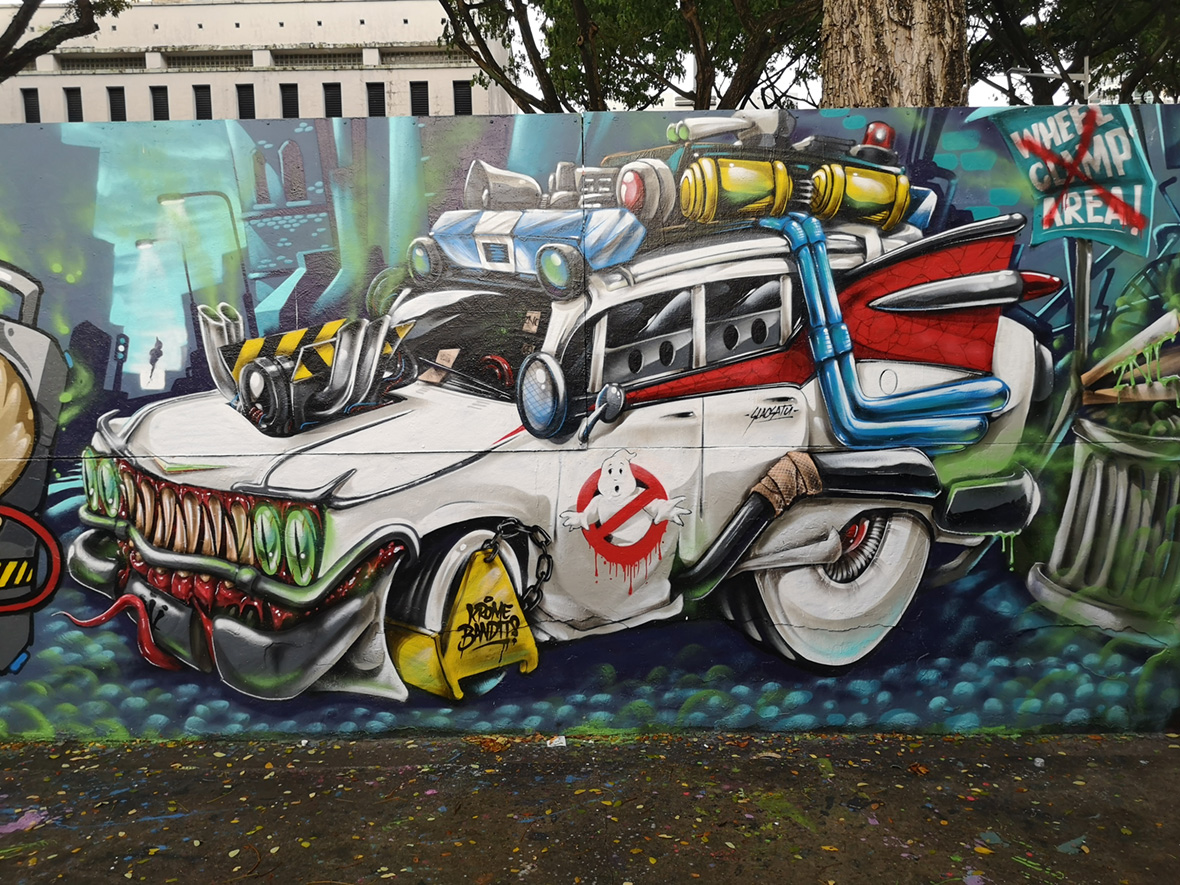
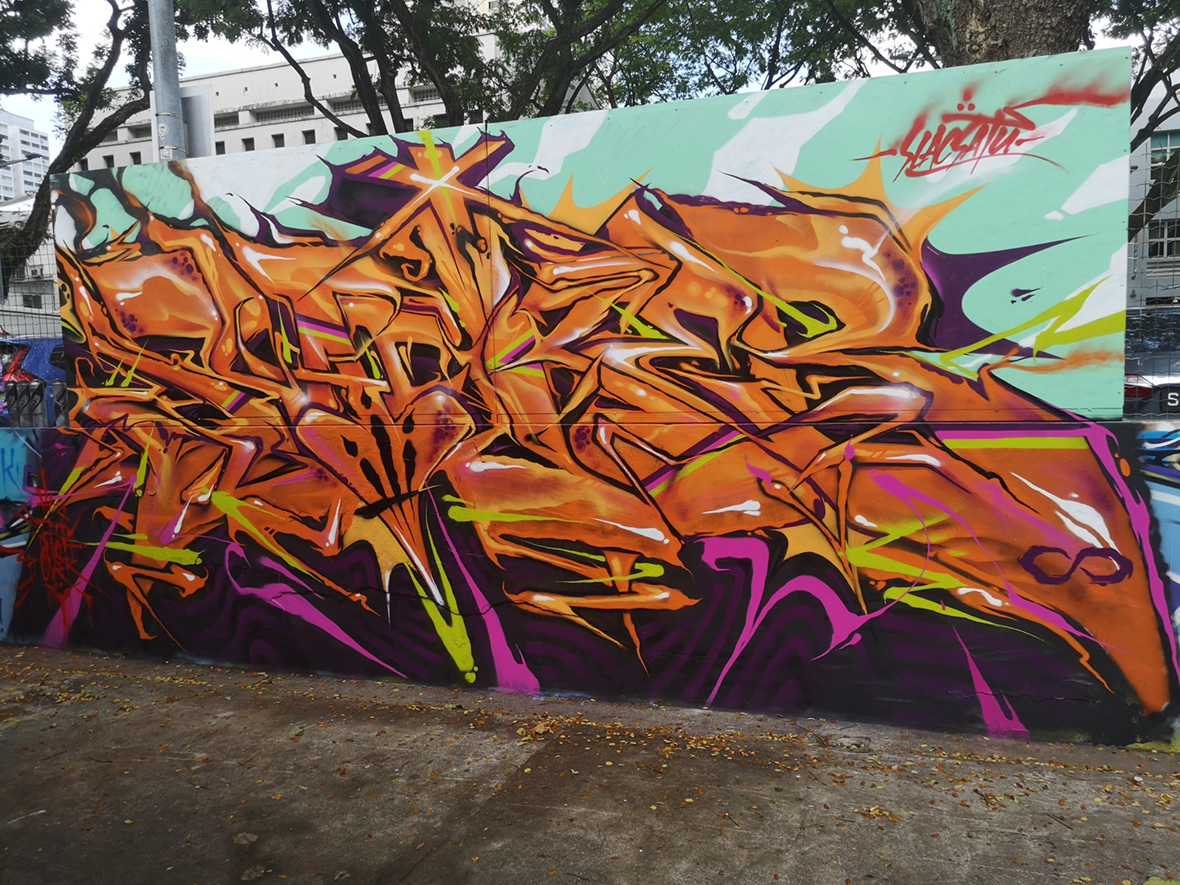
The victory was a clear turning point for Slac. It led to his first commission and made him reevaluate the possibilities of graffiti. “All of a sudden everybody knew who we were,” he recalls. “The case made the regional news. They were calling us the most wanted crew in the country. The other crews didn’t like that though, and it led to a lot of beef.”
By then the crew consisted only of him and his friend Monk. To keep ZNC going, they needed younger blood, so they started recruiting beyond the borders of Singapore. Soon, Phobia and his crew from Malaysia joined. Shake and his team from Indonesia were next. “We didn’t plan for it to become international; it just took its own course. A graffiti crew from Singapore with its strict laws, starting a worldwide crew? It didn’t seem doable. But I stood my ground for the team. They’re family.” A flame that was about to be extinguished eventually grew to a worldwide collective with 100 members at the time of this writing.
这次比赛获胜对 Slac 来说是一个转折点,也为他带来了第一份工作,他也因此重新评估了自己的涂鸦事业。他回忆说:“突然之间,所有人都认识你,这件案件也成为了当地的新闻。人们称我们是新加坡最受欢迎的涂鸦团队。但这也惹到了其他涂鸦团队,所以也导致了很多争吵。”
当时他们团队里只有两个人:他和朋友 Monk。为了让 ZNC 进一步发展,他们需要吸纳年轻的血液,于是他们开始在新加坡以外的地区招募新人。很快,来自马来西亚的 Phobia 和他的团队加入了 ZNC。紧接着,来自印度尼西亚的 Shake 和团队也加入进来。“我们一开始也没打算走向国际;只是自然而然地就成了这个样子。在新加坡这个严刑峻法的国家组建一支国际化的涂鸦团队?听上去就很不现实。但是我一直为团队坚守立场,我们是一家人。”谁能想到这一枚摇曳的火苗,最终燃烧蔓延成一支拥有 100 名成员的全球化团队。
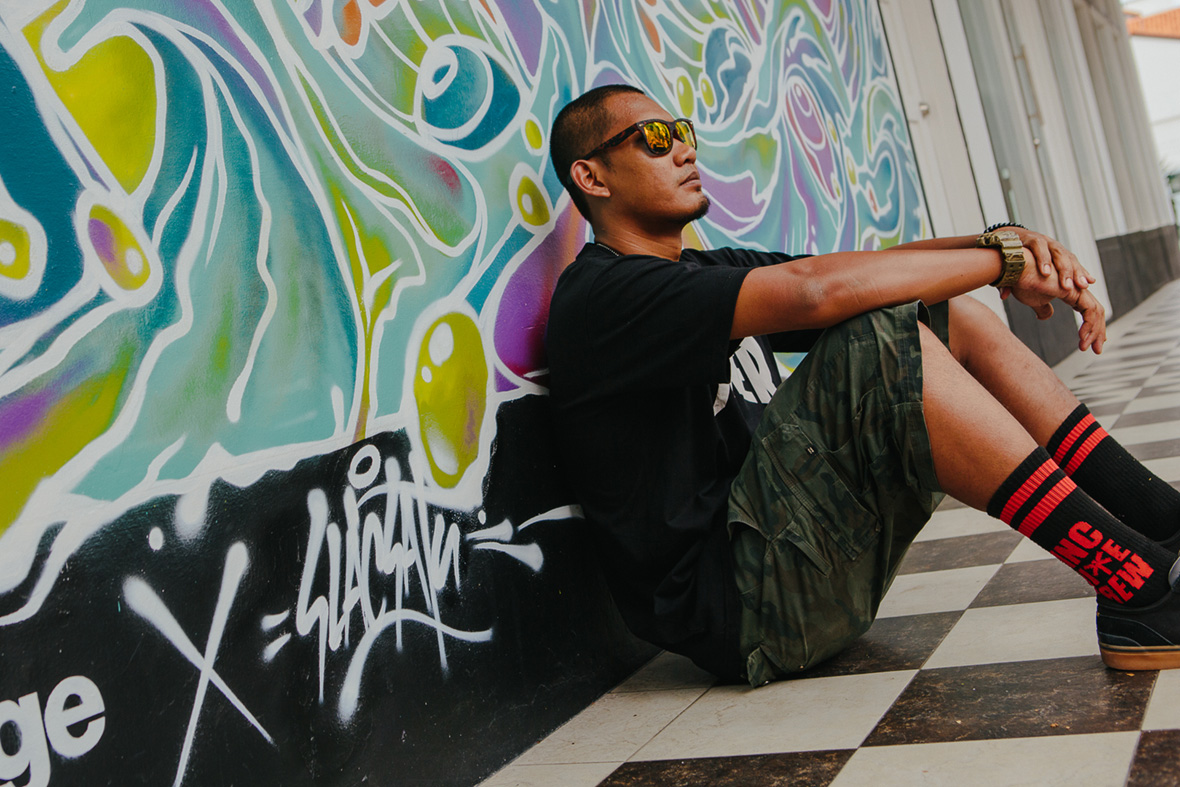
Around 2002, Singapore unveiled its first legal wall at a skatepark. Two years later it added another, and this became home to Slac and other local writers. Eventually new management started demanding to review mockups of anything that would be painted, stifling their work. He boycotted the space and began hunting for a new one. An art collective offered him another home, and eventually, Slac took that space over, turning it into the country’s new hub for graffiti, The Blackbook.
“I want to keep the crew and the scene tight, but we couldn’t do that without our own space,” he says. “With a studio, we can do so much more, focus so much more. It’s a work hard, play hard kind of mentality.” Blackbook proved to be the final missing piece for the country’s scene. The space has a graffiti shop that carries a wide assortment of paint and tools. There are walls people can paint freely. And people are always there, just hanging out, building bonds, and sharing secrets of the trade. “Our role is simple: keep the scene alive,” Slac says. “The next generation of writers won’t be left to figure it all out on their own like me and most of the pioneers.”
大约在 2002 年,新加坡在一个滑板公园推出了第一面合法的涂鸦墙。两年后,又新增了一面,这里成为了 Slac 和其他当地涂鸦艺术家的创作乐园。后来,新的管理层开始要求审查所有涂鸦的图案,这扼杀了他们的创作自由。于是,他放弃了这个空间,开始另觅新的空间。一个艺术团体为他提供了另一个创作的地方,最终 Slac 接管了这个空间,将其改造成新加坡新的涂鸦中心“The Blackbook”。
他说:“我想让团队和涂鸦界有更紧密的联系,所以我们必须要有属于自己的空间。有了工作室,我们可以做更多的事情,更专注于创作。努力工作,努力玩。”Blackbook 已经成为新加坡涂鸦界不可或缺的一部分。工作室设有一间涂鸦用品店,出售各种各样的喷漆和工具。里面也有一些墙面,让人们自由涂鸦。大家都喜欢到工作室里,聚会闲聊,结识朋友,交流创作的技巧。Slac 说:“我们的角色很简单,那就是让涂鸦界保持活力。让新一代的涂鸦艺术家不需要像我和大多数前辈那样自力更生,自己解决所有问题。”
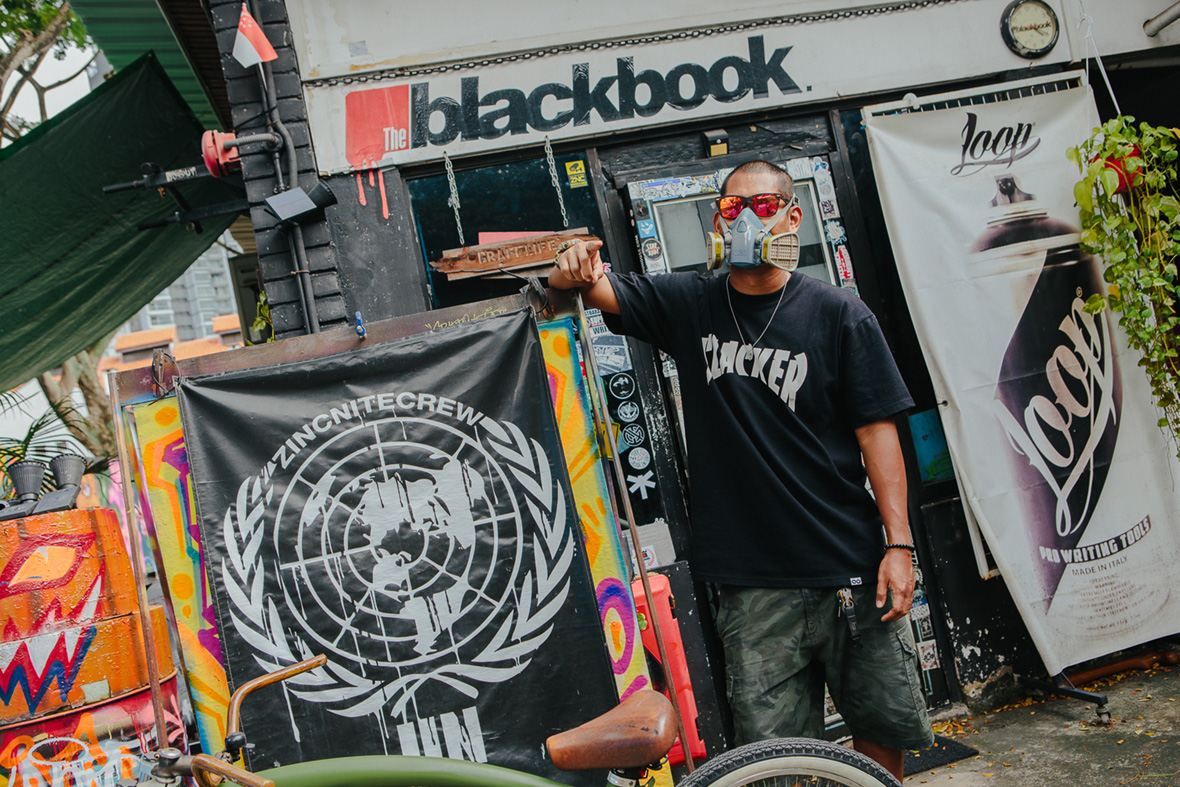
The authorities haven’t forgotten Slac, though. “There’s no more illegal graffiti in Singapore, that era is dead,” he says. “Whenever there are any new vandalism cases, the cops come knocking on our door. You want to go bombing? Sure, I understand. Just leave Singapore to do it.”
不过,政府当局并没有忘记 Slac。他说:“新加坡不再存在非法涂鸦了,这样的时代已经过去了。每当出现新的破坏公物事件,警察就会找上门来。’你想上街涂鸦?我当然理解。但请你出门左拐,到新加坡外面去涂。’”
Like our stories? Follow us on Facebook and Instagram.
Website: slacsatu.carbonmade.com
Instagram: @slacsatu | @zincnitecrew
Contributor: Mike Steyels
Photographer: Gabe Tan
Chinese Translation: Olivia Li
Additional Images Courtesy of Slac Satu
网站: slacsatu.carbonmade.com
Instagram: @slacsatu | @zincnitecrew
供稿人: Mike Steyels
摄影师: Gabe Tan
英译中: Olivia Li
附加图片由 Slac Satu 提供

